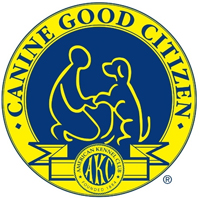|
How often does my dog get walked and where?
When a dog stays overnight with us they will get walked multiple times throughout the day. The first walk is at 5:30am and the last walk is around 9:30pm. During the day the kennel techs walk the dogs every 2-3 hours. The dogs are walked on leash by a kennel tech in our backyard that is surrounded by fencing. If your dog also participates in daycare or has passed our daycare evaluation, and is spending the night with us, they will get daycare time during the stay (no “fees” attached). I have two dogs, will they get to stay together? We have many families that have two, three, and even four dogs who board with us. For this reason, we have kennels of varying sizes to accommodate all party sizes. Our typical kennel size is 5’x6’, we have suites that are 9’x9’, and many other kennels of differing sizes, including 2 kennels that are 5’x11’. Conveniently, our overnight prices stay the same no matter what the kennel dimension. So in that case, your dogs will be boarded in the same kennel with plenty of leg room. What should I bring for my dog when they board? The most important thing for boarding is proof of vaccinations from a licensed veterinarian. Required vaccines are Distemper/Parvo, Rabies, and Bordetella. Bring enough food for your dog’s scheduled stay and a couple extra meals for any unexpected delays. If your dog requires any medications or vitamins please pre-measure dosages and provide administering instructions on drop off. A couple of toys of no monetary value and some treats are always welcome. We do not keep your bowls, leashes, or collars, we supply our own. Barking can be a very tough habit to break and can require a lot of patience on the owner’s part. Dogs can bark for many reasons; boredom, because the neighbor dog is barking, they want you to play with them, or they’re alerting you of an intruder/stranger (which often times is just the wind blowing a tree branch up against the garage). Either way, it can be a nuisance to both you and your neighbors. We find that most dogs bark while the owner is out, so it’s crucial to break this habit when you are present and from the instant the habit begins. Once again, corrective measures like verbally saying “No” can work (through the reinforcement of an obedience class), spray bottles of water, or even bark collars can help. If you are interested in the bark collar approach we would recommend properly introducing this collar to your dog so that they understand what it means when it’s on them. We have bark and electronic collars at On Command and we’re available to help and guide you through the uses of these collars.
There are two big reasons dogs turn to chewing; if they’re puppies, they may be teething, but for most other dogs, they’re just bored. And if you leave a dog to entertain itself, unfortunately they may chew up that new couch you just bought for the living room. There are temporary fixes for this problem, like putting the dog in the backyard or bringing them to a daycare facility, but neither really teach the dog that chewing is not okay. Much like the jumping habit, try to find an effective means of correcting the dog if you catch them in the act. Showing them that this behavior is not accepted by telling them “No,” maybe spraying them with water (as long as they don’t like water), or using a startling method can work. But if they only chew when unsupervised, I would suggest confining them or restricting them from the object they like to chew on while you’re away. Pet stores also carry repellent sprays that have a bitter taste to them. By applying them to the surface that’s being chewed, your dog may be deterred from chewing on it. Obedience training can help the dog develop a level of respect for you and your possessions, but most importantly, establish the value of using the verbal correction “No.” With an obedience class, “No” will be used to redirect a dog if they don’t sit or down, but can then be useful in all troublesome areas.
The recall or “Come” command is one of the most difficult commands for dogs as it requires the most respect from your dog. Dogs love being off leash. Whether you’re out for a hike or at the dog park, they know that often times when they are asked to come, the owner typically puts them on leash in an attempt to leave that fun place. So it’s easy; from the dog’s perspective if they never come, they won’t have to leave. The best way to encourage the recall is with positive reinforcement. Physical and verbal praise when the dog does return to you. Also, practicing this command on leash helps define what you expect from the dog so that when the leash isn’t present, they still know what’s being asked of them. My suggestion is to start this recall process on a 5’-6’ leash by asking the dog to “Come” and if they don’t, reel them in like a fish and enforce the action. Once the dog is proficient at that distance, graduate to a 20’-25’ long line and repeat. Once proficient there, practice with some off leash recalls. Group training is great for this command because it teaches your dog to “Come” even in a distracted environment, around other people and dogs.
Dogs tend to have a greater need to go visit with or bark at a dog when they’re on leash for a couple of reasons. Some dogs have a tendency to become protective of their owner on leash and will react towards other dogs that come near. What the dog is telling us is that they don’t trust the owner with the situation they’ve been put in, therefore they must make the decision to ward off the stranger. With training, the owner can establish a level of communication with the dog, showing them that they do have control of the situation. By asking the dog to sit/down or simply telling them “No” for unwanted behavior, the dog will learn to respect the owner and trust them in new environments. With a dog who is shy or nervous around other dogs, some owners will also experience an elevate reaction from their dog when they are on leash. A simple analogy that may explain this reaction could be the situation of a group of kids coming to bully you, but you’re tied to a tree, with no escape. You might come out swinging. It’s as the saying goes, “Fight or Flight.” If you can’t get away, much like your nervous dog on leash, then they’re going to stand their ground. For your dog, this may produce a level of excitement/aggression that your dog, in an off leash setting, wouldn’t typically do. Again, a group obedience class could help your dog relax in similar situations and learn to trust other dogs, but especially you for putting them in that environment.
Dogs learn at a very young age the habit of jumping on people. Consider that when they’re young, small, and cute, they greet us by jumping up on our legs. We encourage the behavior by allowing this as we love and pet them. This learned behavior is very similar to the small child who walks up to you with their arms outstretched and in turn we pick them up. To break this habit, you must establish a level of discipline the dog will respect. Using the verbal correction of “No, Off,” pulling them off the person they’re jumping on, or extending a knee out as they jump can help deter the jumping. A beginner obedience group class can also greatly help educate the owners and dogs on the best way to correct the jumping behavior and teach basic leash manners. Enforcing a rule is much easier to do by putting your dog on leash and provide the feedback they need.
House training can be one of the easiest or one of the hardest parts of puppy raising. If done correctly, a puppy can learn to potty outside within a weeks’ time. This also goes for the recent rescue dog who, at 4 years old, may have never been taught to go to the bathroom outside. Or for the dog you’ve had for years who learned to use a doggie door at a young age, but due to a recent move, you no longer have a backyard the dog can visit at their free will. The method remains the same under all circumstances.
The use of a crate for supervision and confinement will help the dog learn that when indoors, they are not to relieve themselves. The crate becomes their den, safe place, a room of their own in your house. They should be familiar sleeping in the crate and spending time their when they cannot be supervised. Instinctually, dogs will not dirty their dens, being that they spend a decent amount of time in there. At first, the dog may not be able to hold their bladder through the whole night, so they may have a 3am potty break, but in time, they will learn to hold their bladders up to 8 hours through the night. You may feed your dog in their crate to get them comfortable with the space, but refrain from leaving food or water in there for extended periods of time. NEVER use the crate for punishment as this will undo the hard work it takes to get your dog comfortable with the space. Also, take all collars off your dog when they will be spending time in their crate. Scheduling is the second most important part of house training. If you can schedule when food and water goes in, you can predict when it will need to come out. Try to schedule your dog to 2 or 3 meals a day, allowing water during those meals and after play sessions. Avoid from free feeding or allowing your dog to graze at their food all day and excessive amounts of treats. Be conscious of their water consumption as well, as this can lead to frequent urination. When it’s time to go out for a potty break, go with your dog to be sure they “get busy” and take care of number 1 and 2. Pick up water at least an hour before bedtime and always allow your dog a final bathroom break 15-20 minutes before they go in their crate for the night. Remember that you can only discipline your dog if you catch them in the act and PLEASE don’t rub their noses in the mess that they may have made hours prior. They don’t have a clue why you’re doing that. Rush them outside where they can finish and you can praise them with a “Good Boy/Girl” for it. Be sure to clean the mess (on carpet, wood floor, tile, etc.) with an enzymatic based cleaner for best results. Every dog owner knows the moment that you come home and see your favorite shoes all over the living room. In that moment you may be upset or confused as to why Spot chose to chew on those. Doesn't he know that those are my favorite? Well here are some tips to avoid those unnerving moments.
First Things First: All dogs chew! Especially puppies. Puppies, just like babies, teeth and need to chew on something to sooth the pain of new teeth growing. Even as dogs grow in age they will continue to want to chew on something. They do this for many reasons. It can be for fun, for stimulation or to relieve stress. Plus, it helps keep their jaws strong and their teeth clean. So some chewing is healthy! So how do you get that cute new puppy to avoid chewing on your personal items? The way you discipline your pup will help determine how well he/she will abide by the boundary between your stuff and its toys. Healthy Chewing:
Discipline When The Inevitable Bad Chewing Happens:
These are just a few ways to help avoid chewing and disciplining your dog. Always do your research on the breed of dog you have or are going to get as to see what specific behaviors they might have!  Canine Good Citizen Class: $25 Should my dog take the class? The Canine Good Citizen class is the first step in getting your dog out into hospitals and schools to benefit people in the community. If your dog has a knack for listening to children read or making people smile, consider enrolling your dog in our next Canine Good Citizen course. How long is the class? The class is about an hour long. Not all dogs pass! Q. My dog likes to tease my cat by lurching and barking at him, almost like he wants to play. How can I get my dog to play nice?
A. Consider that your dog may not be playing; he may be tapping into instincts to attack or "prey drive." It is your job as the alpha to show your dog how to respect the cat. To achieve this, the dog needs to learn basic obedience. This is the cornerstone of all dog training. Basic obedience training shows the dog that you are the alpha, and that the dog needs to follow your directions. When or before the cat enters the room, put the dog in a down-stay. Keep the dog on a leash so that you can keep him controlled. Practice keeping the dog in a down-stay even when the cat is in the room. Cats and dogs both have natural instincts. Cats have an instinct to freeze when a predator is close by. They freeze because dogs can't see as well as they can smell; the sudden movement of a cat will be picked up by a dog's nose. Dogs have an instinct to chase the sudden movement of another animal, as the scent of the animal hits the dog's nose. Through basic obedience you can overcome your pets' instincts to chase and be chased. Depending on your dog's temperament this may take some time. Choose a regular time each day to practice with your dog on leash. Eventually your dog and cat will learn to respect and trust each other, with your consistent leadership! |
875 Greg Street
Sparks, NV 89431 775-825-3647 (DOGS) On Command!
All
|



 RSS Feed
RSS Feed


